Recent Articles
Popular Makes
Body Types
10 Best Luxury Cars with AWD
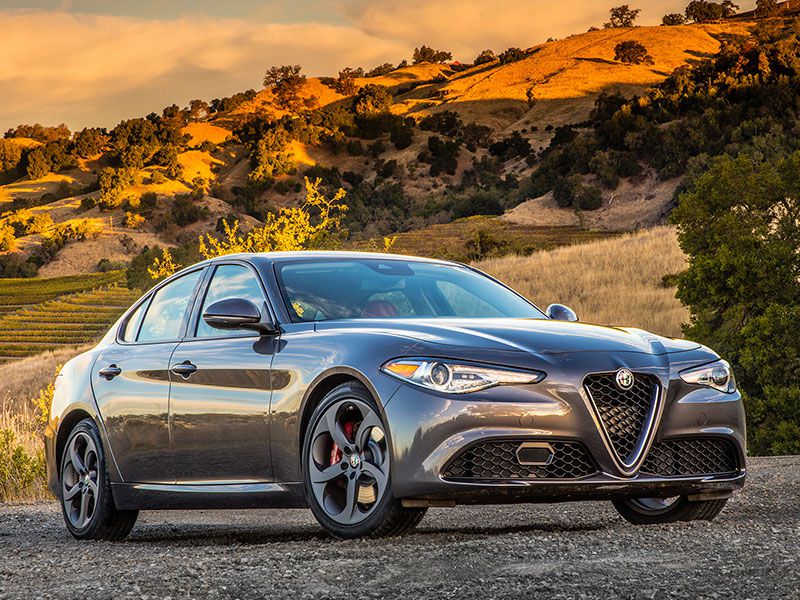
2017 Alfa Romeo Giulia hero ・ Photo by Alfa Romeo
As this round-up of 10 best luxury cars with all-wheel drive demonstrates, these cars do more than simply get you home when it’s snowing. The technology has been intelligent for years and keeps getting smarter, especially since electric motors joined the fray. A typical setup these days has most of the drive going to the rear wheels for a sportier feel, with more sent to the front wheels within milliseconds when the situation demands it. Also, engine management systems and other fuel-saving (and weight-saving) measures have evolved so there isn’t much of a penalty at the pump. An all-wheel-drive car might be thirstier than its 2-wheel-drive counterpart by only about a mile per gallon.
2017 Alfa Romeo Giulia
The Giulia is all-new for 2017, and the marque’s first luxury sedan to reach the United States since the return of parent company Fiat and the merger with Chrysler. It competes in the same class as the all-conquering BMW 3 Series, but it does have Italian styling and dynamics in the Pros column. Plus, there's an all-wheel drive system called Q4, which is available in the base and Ti versions, and can disconnect the front axle completely, saving fuel. These versions have a healthy 280 hp and 306 lb-ft of torque, and their equipment includes a carbon fiber driveshaft for less weight and better throttle responses (compared with a regular steel driveshaft).
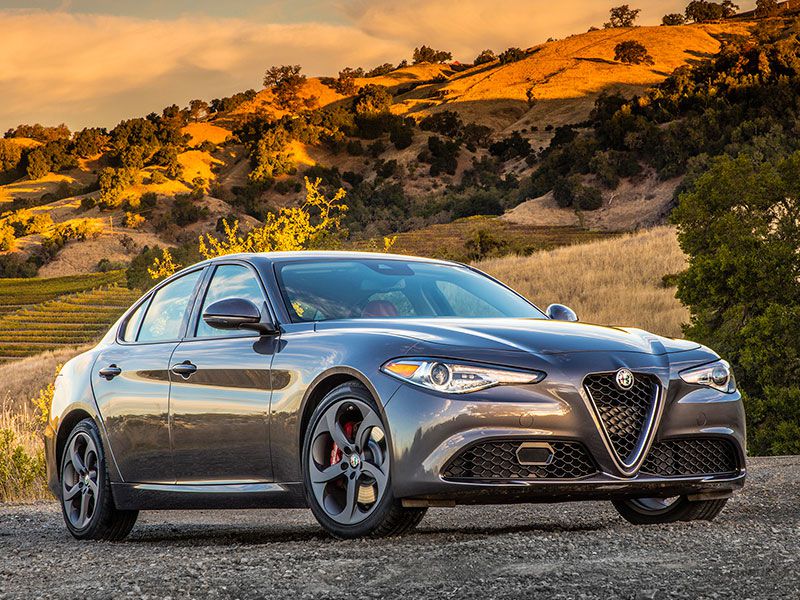
Photo by Alfa Romeo
2017 Audi A4
There are bigger luxury cars from Audi, but the newest and therefore the most recently developed — with the freshest technology in every respect — is the superb A4, whose fifth generation debuts in the United States for the 2017 model year. Audi has the advantage of all-wheel drive expertise thanks to its Quattro systems, which have been a constant feature in the 4-ringed portfolio for decades. In contrast to the now-common rear-biased systems, Audi offers Quattro Ultra in the new A4, where only the front wheels are driven the majority of the time, but sending power to the rears if necessary. This approach saves gas and also reduces wear on the driveline’s components.
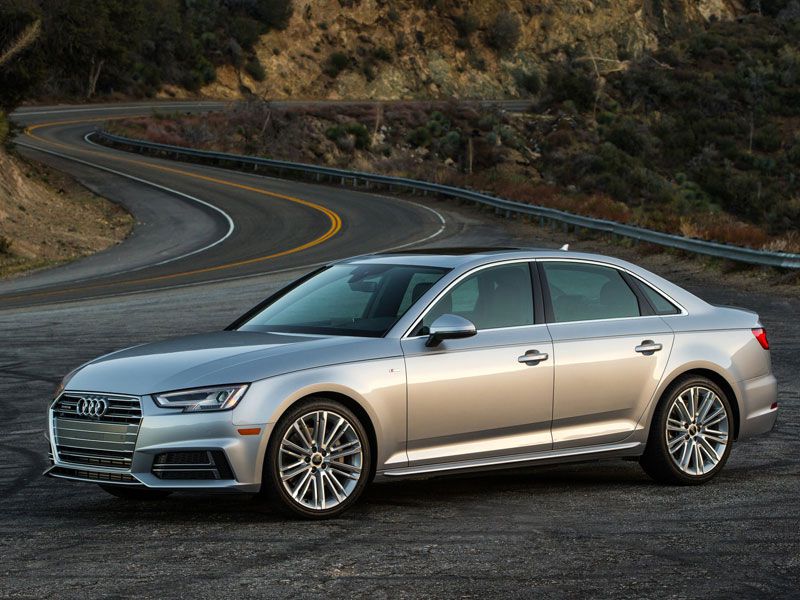
Photo by Audi
2017 BMW 740e xDrive
Conventional versions of the excellent 7 Series offer all-wheel drive, which BMW calls xDrive. But this plug-in hybrid version is different and intriguing because it takes things to quite an involved level. Whether using just the turbocharged combustion engine, the electric motor, or both, this large flagship sedan always enjoys permanent all-wheel drive. Making sure this all operates as a smooth and capable conveyance is a powerful and intelligent management system. Total system output is 322 hp and 369 lb-ft of torque, which may not sound like much, but thrust kicks in at quite low speeds and this generation of 7 Series has a radical construction that’s comparatively light in weight.
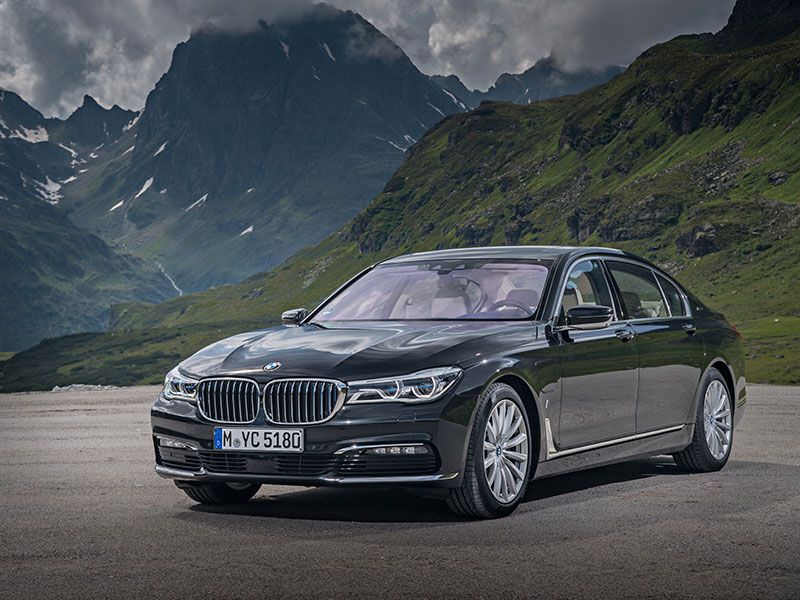
Photo by BMW
2017 Cadillac CT6
Size-wise, Cadillac’s new flagship sedan avoids the German system by fitting between the BMW 5 Series and the 7 Series. But it’s still accommodating, serene and agile. The clever thing about the CT6’s all-wheel drive system is that it sends 60 percent of torque to the rear wheels, but that figure increases to 80 percent when the sportier driving mode is selected. There’s also a winter mode for a surefooted 50/50 split. Although the car world is currently in the grip of crossover fever, sedans remain attractive — the CT6 being a prime example. Its construction is also impressive, using a mix of high-strength steel and aluminum for rigidity, relatively light weight, and inbuilt noise suppression.
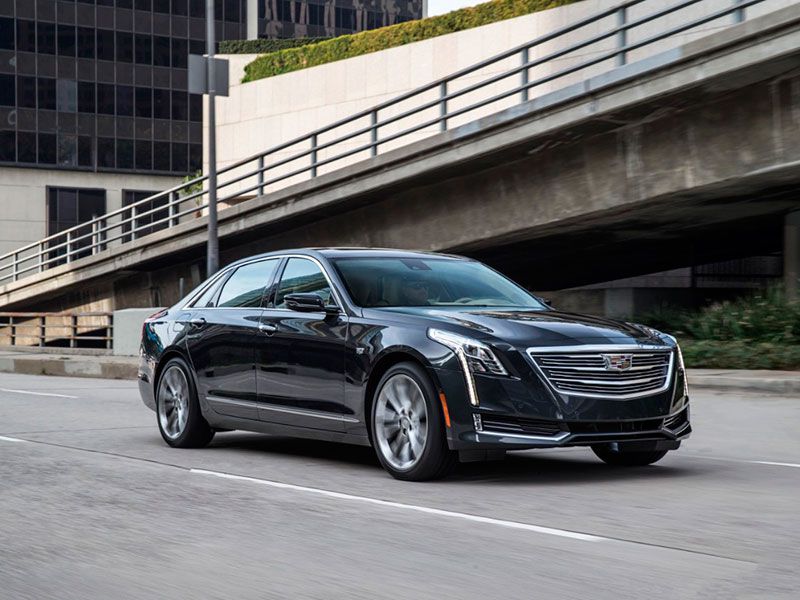
Photo by Cadillac
2017 Jaguar XF
Jaguar could have merely looked over the shoulders of the engineers at sister company Land Rover and produced a world-class all-wheel drive system. But what works for off-roaders doesn’t necessarily apply to a luxury sedan. Jaguar needed something with a character more appropriate to its supple and agile cars, and so developed its own. It had to be fairly light and have quick, yet subtle reflexes. The result is Intelligent Driveline Dynamics (IDD), where the midsize XF usually has 90 percent of power going to the rear wheels, but the system is constantly monitoring and adjusting. It collates all sorts of information, like traction and steering wheel position, to anticipate a slip rather than just react to it.
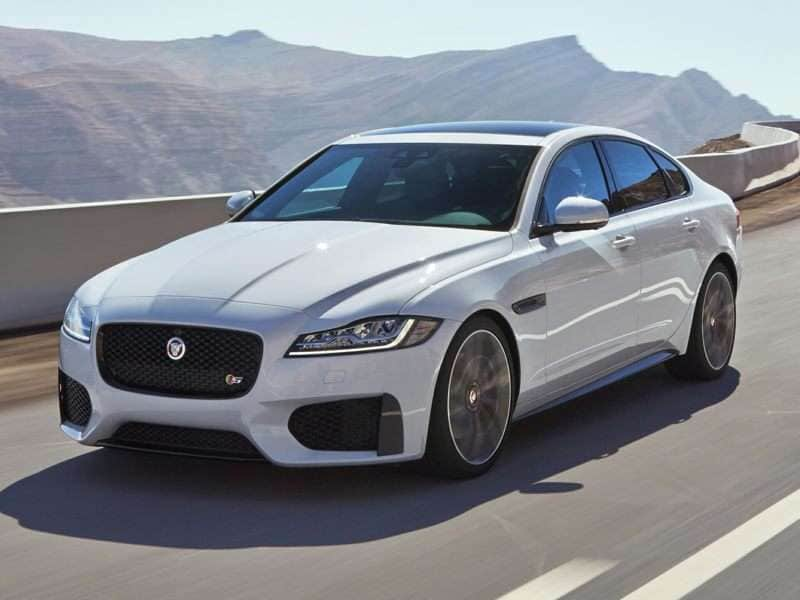
Photo by Jaguar Land Rover
2017 Lexus GS 350 AWD
Lexus offers all-wheel drive for many of its products, but the most luxurious, the LS, is about to be renewed, so the current pick of the bunch with all-wheel drive is the midsize GS. Actually, Lexus likes to call it “all-weather drive,” but the result is the same. The default setting is a 30/70 torque split between the front and rear axles, although the system can direct up to 50 percent to the front. A Lexus is traditionally not considered as engaging as its German competition, but the GS defies that assumption. For an added bonus, the 2017 version has a suite of advanced safety features as standard that were formerly an options package.
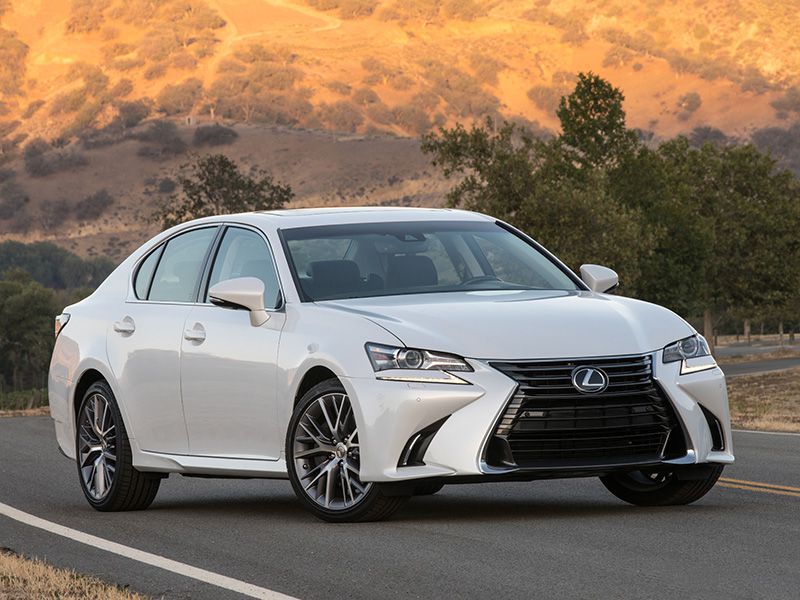
Photo by Lexus
2017 Mercedes-Benz S550 4Matic
The S-Class is a glorious hunk of high-tech luxuriousness. The range has now expanded to take in high-performance AMG versions, plus coupes and convertibles (cabriolets). But let’s simplify matters and concentrate on the S550 sedan, which is the first rung on the S-Class ladder. Like many manufacturers, Mercedes-Benz has a special name for its all-wheel drive system. The company calls it 4Matic. In this application, the usual torque split is 45/55 front to rear. That might be too subtle for anyone to feel the greater amount of drive at the back. But at least there’s a balance to help the car feel super-stable through the corners. The AMG version is more extreme: 33/67.
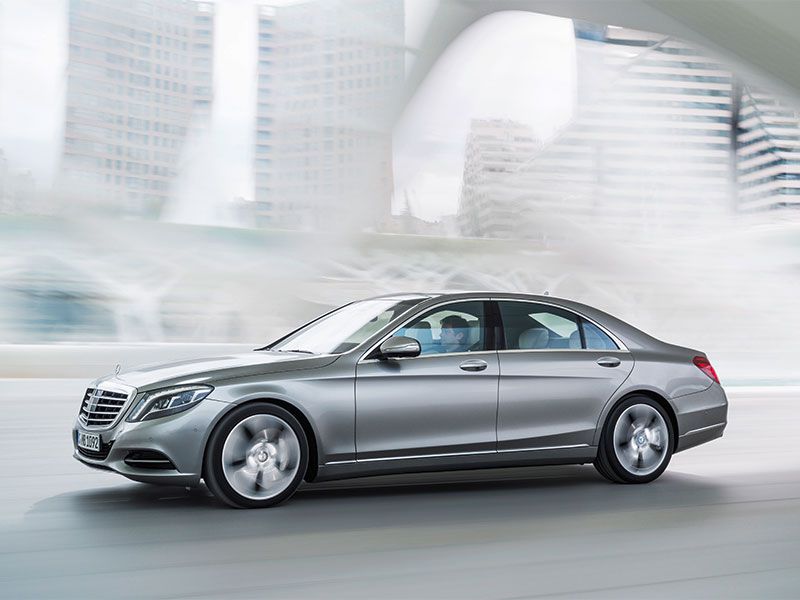
Photo by Mercedes-Benz
2017 Porsche Panamera
The Panamera luxury-kinda-sporty sedan-kinda-hatchback has its second generation debuting for 2017. The 2018 all-wheel drive hybrid version will be one of the fastest cars of its kind, with a top speed of 172 mph. But all-wheel drive is also available right now in versions using regular gasoline engines, including the awesome Panamera Turbo with a twin-turbocharged V8 making 550 hp. Naturally, there’s a fancy name: Porsche Traction Management. But it involves more than just a couple of differentials. It also entails torque vectoring — sending power to individual wheels and sometimes just braking one wheel in particular, all in the pursuit of handling excellence and predictable cornering lines at speed.
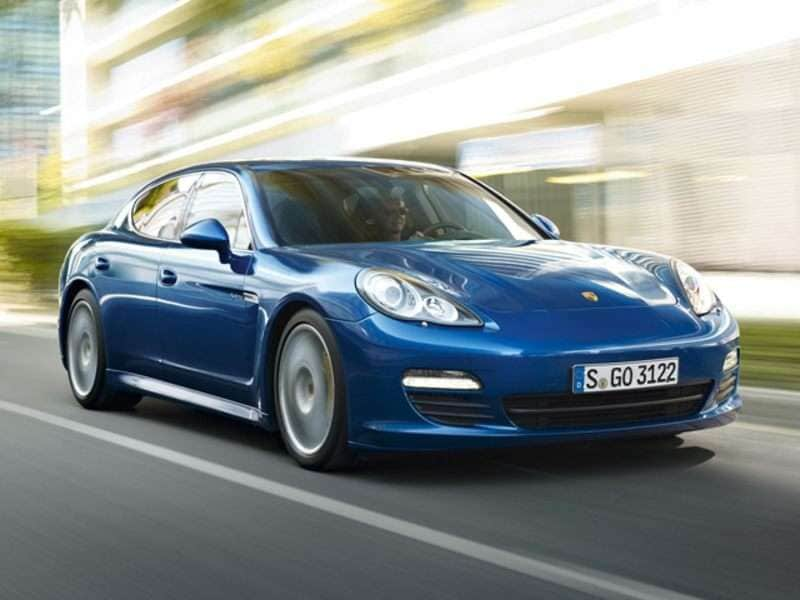
Photo by Porsche
2017 Tesla Model S
The top three of the four power levels available (60, 75, 90, 100) can come with all-wheel drive, which is signaled by the letter D. So the high-dollar, high-performance version is the P100D (P stands for for performance). To achieve all-wheel drive, the Model S uses two electric motors, one for each axle. Both have 259 hp, except for a 503-hp rear motor in the P100D — there’s that sporty rear-drive bias again. Cleverly, all-wheel drive versions have better ranges than rear-drive counterparts because Tesla has programmed their systems to move power between the two motors for optimum efficiency. Maximum range is currently (pardon the pun) 315 miles.
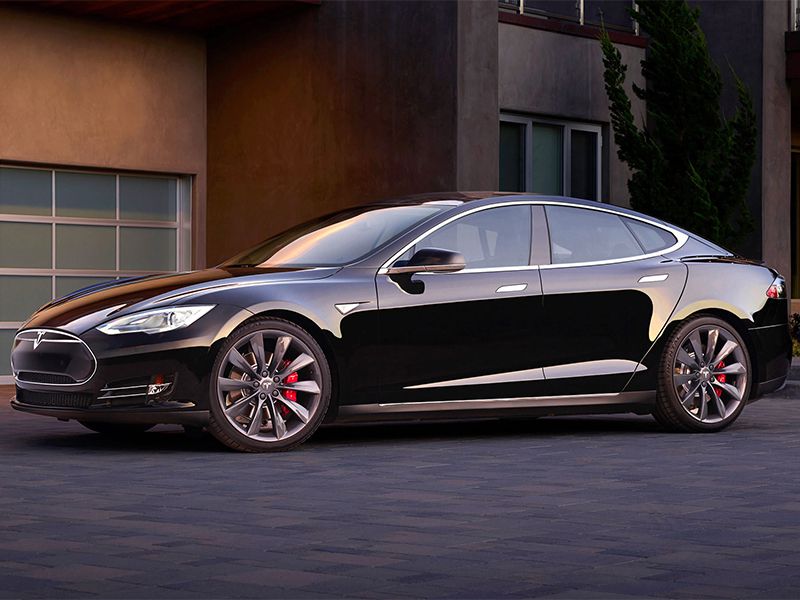
Photo by Tesla
2017 Volvo S90 T6
All-new for 2017 and already winning awards like Car Design of the Year. But the classy, yet stunning styling is just one aspect of this accomplished sedan (based on the same platform as the XC90 SUV). Volvo is renowned for safety and it’s a Swedish company, from a country where harsh winters are regular and long-lived. So we can pretty much assume that the all-wheel drive system in the T6 version can handle all sorts of foul weather. This is another setup that runs just the front wheels by default, but can send up to 50 percent of torque to the rears should conditions dictate. A T8 plug-in hybrid, also with all-wheel drive, is due in 2017.
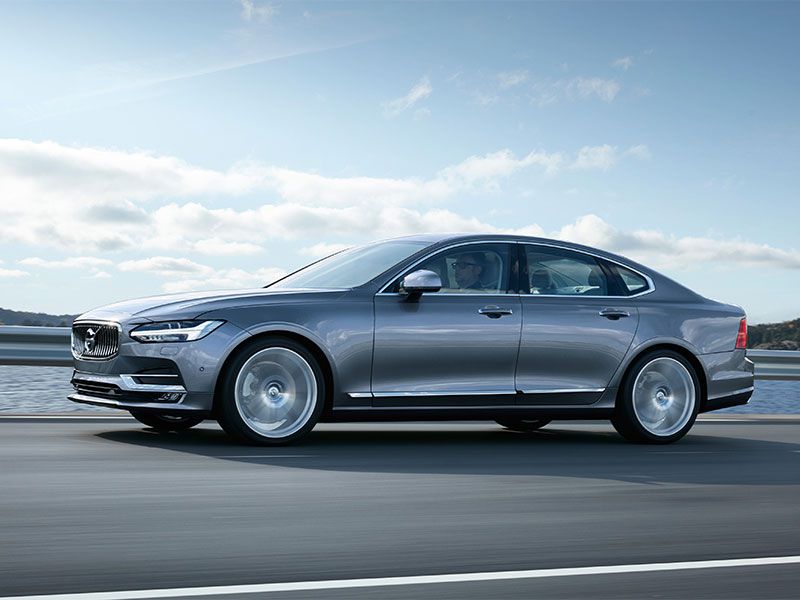
Photo by Volvo